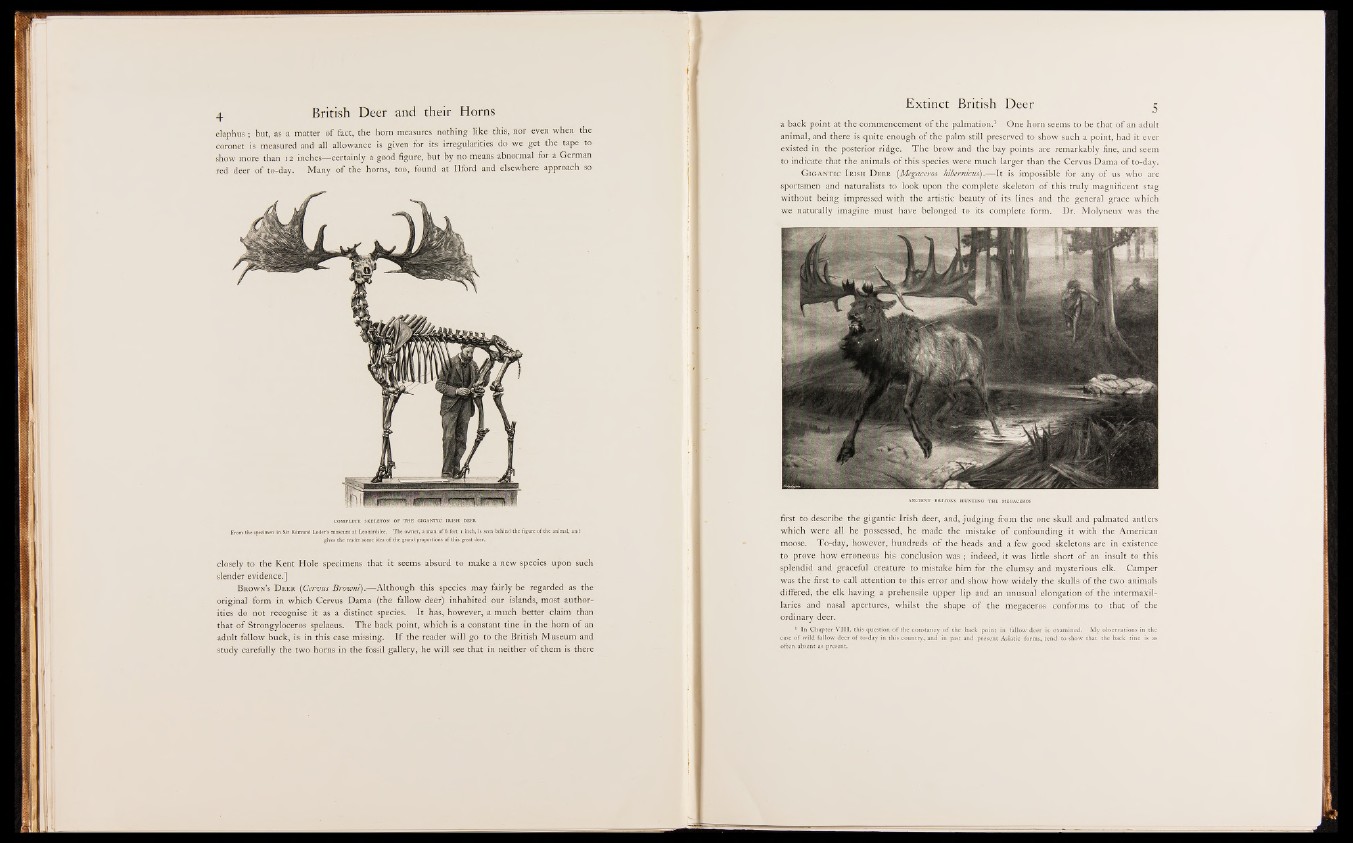
elaphus ; but, as a matter o f fact, the horn measures nothing like this, nor even when the
coronet is measured and all allowance is given for its irregularities do we get the tape to
show more than 12 inches-—certainly a good figure, but by no means abnormal for a German
red deer o f to-day. Many o f the horns, too, found at Ilford and elsewhere approach so
From the specimen in Sir Edmund Loder’s museum at Leonardslee. The owner, a man of 6 feet i inch, is seen behind the figure of the animal, and
gives the reader some idea of the grand proportions of this great deer.
closely to the Kent Hole specimens that it seems absurd to make a new species upon such
slender evidence.]
B r o w n ’s D e e r (Cervus Browni).— Although this species may fairly be regarded as the
original form in which Cervus Dama (the fallow deer) inhabited our islands, most authorities
do not recognise it as a distinct species. It has, however, a much better claim than
that o f Strongyloceros spelaeus. T h e back point, which is a constant tine in the horn o f an
adult fallow buck, is in this case missing. I f the reader will go to the British Museum and
study carefully the two horns in the fossil gallery, he will see that in neither o f them is there
a back point at the commencement o f the palmation.1 One horn seems to be that o f an adult
animal, and there is quite enough o f the palm still preserved to show such a point, had it ever
existed in the posterior ridge. T h e brow and the bay points are remarkably fine, and seem
to indicate that the. animals o f this species were much larger than the Cervus Dama of to-day.
G i g a n t i c I r ish D e e r (Megaceros hibernicus).— It is impossible for any o f us who are
sportsmen and naturalists to look upon the complete skeleton o f this truly magnificent stag
without being impressed with the artistic beauty o f its lines and the general grace which
we naturally imagine must have belonged to its complete form. Dr. Molyneux was the
first to describe the gigantic Irish deer, and, judging from the one skull and palmated antlers
which were all he possessed, he made the mistake o f confounding it with the American
moose. To-day, however, hundreds o f the heads and a few good skeletons are in existence
to prove how erroneous his conclusion was ; indeed, it was little short o f an insult to this
splendid and graceful creature to mistake him for the clumsy and mysterious elk. Camper
was the first to call attention to this error and show how widely the skulls o f the two animals
differed, the elk having a prehensile upper lip and an unusual elongation o f the intermaxil-
laries and nasal apertures, whilst the shape o f the megaceros conforms to that o f the
ordinary deer.
1 In Chapter VIII. this question of the constancy of the back point in fallow deer is examined. My observations in the
case of wild fallow deer of to-day in this country, and in past and present Asiatic forms, tend to show that the back tine is as
often absent as present.